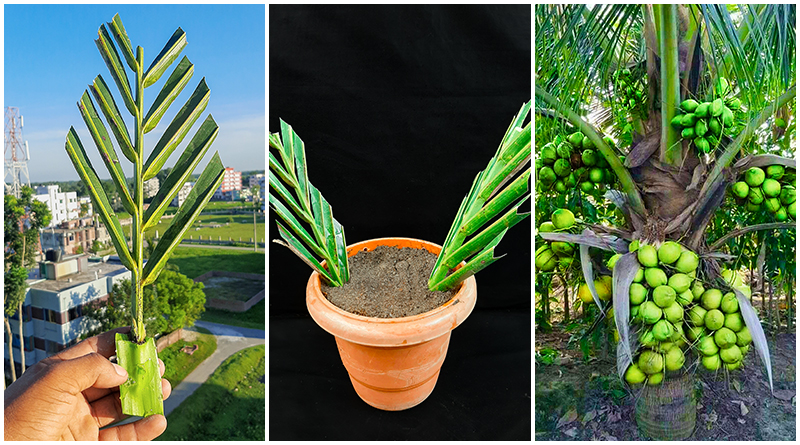Coconut Planting Method | How to Plant Coconut Tree at Home
Planting a coconut tree at home involves several steps, starting with seed selection and germination, followed by planting and ongoing care.
-
Selecting a Coconut Seed
Choose a mature coconut that still has its husk. You should be able to hear the water sloshing inside when you shake it. Soaking the coconut in lukewarm water for 3-4 days can help soften the husk and speed up germination.
-
Germinating the Coconut
Place the coconut in a zip-lock bag with about 1 cup of water. Seal the bag and store it in a warm, dark place for up to 3 months. Check weekly for sprouts and root growth. Once the sprout is finger-length and roots are 6-8 inches long, it’s ready to plant. You can wrap a damp paper towel around the roots to keep them moist while waiting.
-
Preparing the Soil and Planting
Use a well-draining mix. If planting in a pot, combine half potting soil and half sand, adding some fine gravel or vermiculite for better aeration. For outdoor planting, ensure the soil is loose and well-draining.
Choose a pot at least 10 inches deep and wide enough to accommodate the coconut. For mature indoor palms, a pot of at least 10 gallons is recommended. Ensure the pot has good drainage. Clay pots are good for allowing excess moisture to escape.
-
Watering and Sunlight
Water the coconut tree 2-3 times a week, keeping the soil consistently moist but not waterlogged. Reduce watering slightly in cooler months. Indoor trees may benefit from misting the leaves to maintain humidity.
-
Temperature and Humidity
Maintain a temperature above 22°C, with optimal growth between 27-35°C. High humidity is beneficial. For indoor plants, use a humidifier or place the pot on a pebble tray with water.
-
Fertilizing
After one year, fertilize with a balanced fertilizer that includes boron, manganese, and magnesium. Apply according to the fertilizer instructions, usually once or twice a year during the growing season. For indoor plants, use a liquid fertilizer year-round.
Ongoing Care
Ensure good drainage to prevent root rot. As the palm grows, repot it into a larger container. Monitor for pests like aphids, spider mites, and scale, and address any issues promptly with appropriate treatments.
79 total views, 1 views today




